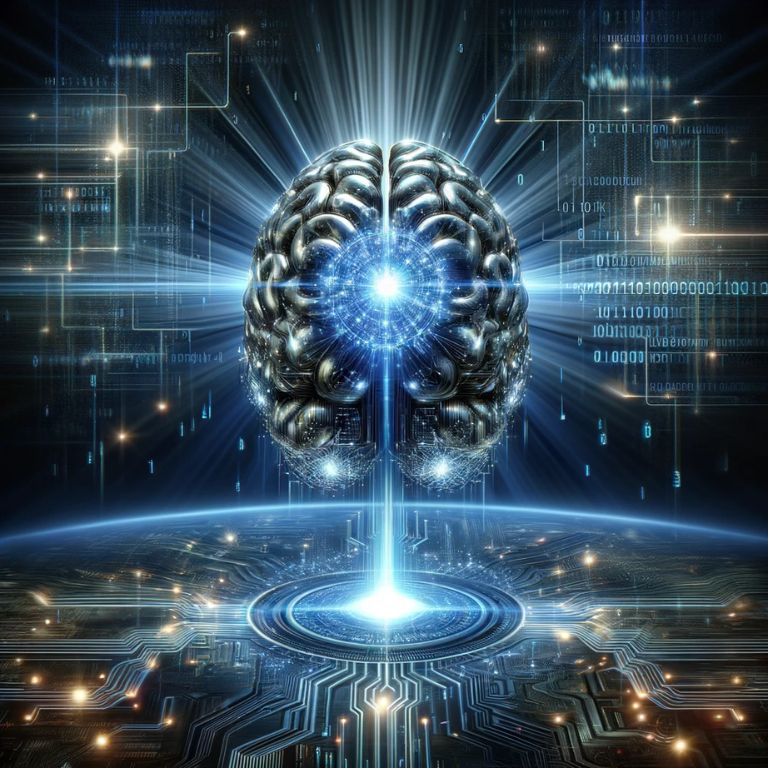In the ever-evolving digital world, cybersecurity has become a paramount concern for individuals, businesses, and governments alike. The traditional methods of securing digital assets and networks are continuously challenged by sophisticated cyber threats that evolve at a breakneck pace. This dynamic landscape calls for advanced solutions that can not only respond to threats as they occur but also predict and prevent them. This is where Artificial Intelligence (AI) steps in, offering a new paradigm in cybersecurity measures.
The Current Cybersecurity Landscape
The digital age, while bringing unparalleled connectivity and convenience, also opens up a myriad of vulnerabilities. Cyber threats range from malware and phishing attacks to more complex ransomware and state-sponsored cyber-espionage. The 2022 Cybersecurity Report by Symantec highlights a surge in targeted ransomware attacks, indicating a shift from widespread, indiscriminate attacks to more focused, high-value targets.
| Attack Type | Prevalence (%) | Description |
| Malware | 30% | Malicious software designed to harm a computer. |
| Phishing | 25% | Fraudulent attempt to obtain sensitive information. |
| Ransomware | 20% | Malware that encrypts data, demanding a ransom. |
| Denial-of-Service | 15% | Overloading a system to disrupt its services. |
| Others | 10% | Includes SQL injection, zero-day exploits, etc. |
The Emergence of AI as a Key Tool in Digital Defense
Artificial Intelligence has emerged as a game-changer in the fight against cybercrime. AI’s ability to learn from data, identify patterns, and make decisions with minimal human intervention makes it an ideal candidate for enhancing cybersecurity measures. AI algorithms can analyze vast amounts of data from past cyber attacks to predict and prevent future incidents. This proactive approach is a significant shift from the traditional reactive cybersecurity methods.
AI-driven cybersecurity tools leverage machine learning, deep learning, and natural language processing to enhance various aspects of cybersecurity. For example, machine learning algorithms are used to detect anomalies in network traffic, potentially identifying a cyber attack in its early stages. Similarly, natural language processing helps in scanning emails and other communications to detect phishing attempts.
The Transition to AI-Enhanced Cybersecurity
The transition to AI-enhanced cybersecurity is not just a technological upgrade but a strategic shift in the approach towards digital defense. Organizations are now focusing on developing AI-driven security protocols that can work autonomously to detect, analyze, and respond to threats in real-time. This shift is increasingly critical as the volume of data and the complexity of networks continue to grow, making manual monitoring and response impractical.
Understanding AI-Driven Threat Detection
The integration of Artificial Intelligence (AI) into cybersecurity marks a transformative shift from conventional defense mechanisms. AI’s capability to not only detect but also predict cyber threats plays a pivotal role in fortifying digital security.
How AI Algorithms Detect and Predict Cyber Threats
AI algorithms, particularly in the field of machine learning and deep learning, have opened new avenues in threat detection. These algorithms are adept at identifying patterns and anomalies that often go unnoticed by traditional security systems. Here are key ways in which AI algorithms are employed for threat detection:
- Anomaly Detection: AI systems analyze regular network behavior and can quickly identify deviations, signaling potential security threats.
- Pattern Recognition: Using historical data, AI can recognize patterns associated with malware or hacking activities.
- Behavior Analysis: AI examines user behavior to detect unusual activities, such as accessing sensitive data at odd hours.
- Predictive Analysis: By leveraging data from past cyber attacks, AI can predict potential future attack vectors and prepare defenses accordingly.
- Threat Intelligence: AI continuously gathers and analyzes data from various sources, providing real-time intelligence about emerging threats.
Successful AI-Driven Threat Detection
One notable example of successful AI-driven threat detection is IBM’s Watson for Cyber Security. Watson’s cognitive computing capabilities enable it to process vast amounts of unstructured data, including research papers, blogs, and news stories, to learn about the latest cyber threats. In one instance, Watson helped a financial institution identify a malicious insider threat. The AI system flagged unusual data transfer activities from an employee’s account, which upon investigation, revealed a significant data breach attempt.
Another compelling case is Darktrace’s use of AI algorithms for detecting and responding to cyber threats in real time. Darktrace’s Enterprise Immune System employs machine learning to understand normal network behavior and detect anomalies. This approach was instrumental in identifying and mitigating a fast-moving ransomware attack on a global service provider, halting the attack within minutes and preventing widespread damage.
Enhancing Cybersecurity Protocols with AI

The incorporation of Artificial Intelligence (AI) into cybersecurity frameworks signifies a critical evolution in digital defense strategies. AI’s adaptability and learning capabilities offer a robust enhancement to existing cybersecurity protocols.
Integration of AI in Existing Cybersecurity Frameworks
AI integration into cybersecurity is not about replacing existing systems but rather augmenting and strengthening them. This integration involves embedding AI algorithms into current network and security infrastructures to enhance threat detection, response, and prevention capabilities. For instance, AI algorithms are used alongside traditional firewalls and intrusion detection systems to provide a more dynamic and adaptive security posture. These AI-enhanced systems can analyze traffic and user behavior in real time, offering a more nuanced and proactive approach to threat detection and mitigation.
Benefits and Challenges of AI-Enhanced Protocols
Benefits:
- Proactive Threat Detection: AI enables early identification of potential threats, allowing for timely response and mitigation.
- Automated Response: AI systems can automatically respond to identified threats, reducing the need for human intervention and accelerating response times.
- Continuous Learning: AI algorithms continuously learn and adapt, improving their accuracy and effectiveness over time.
- Scalability: AI can handle large volumes of data and scale as network demands increase, making it ideal for large and complex networks.
- Customization: AI systems can be tailored to the specific security needs of an organization, providing customized defense mechanisms.
Challenges:
- Data Privacy Concerns: The use of AI in cybersecurity often involves processing large amounts of sensitive data, raising privacy concerns.
- Complexity in Management: AI systems, particularly those involving machine learning, can be complex to set up and manage.
- Risk of Over-reliance: Over-reliance on AI could lead to underestimating the importance of human oversight in cybersecurity.
- False Positives: AI systems might sometimes flag benign activities as threats, leading to unnecessary actions or alert fatigue.
- Adaptation by Cybercriminals: There’s a risk that cybercriminals might also use AI to develop more sophisticated attack strategies.
AI in Cybersecurity: Automation and Efficiency
Artificial Intelligence (AI) is redefining the landscape of cybersecurity, particularly in the realms of automation and operational efficiency. The integration of AI is transforming how security responses are executed and managed.
The Role of AI in Automating Security Responses
AI’s most significant contribution to cybersecurity is perhaps its ability to automate complex and time-consuming security processes. Through the use of AI algorithms, cybersecurity systems can now automatically detect, assess, and respond to threats without human intervention. This automation is particularly crucial in handling high-volume, repetitive tasks such as monitoring network traffic, scanning for vulnerabilities, or sorting through false positives. AI’s rapid response capabilities are vital in mitigating threats like zero-day exploits, where the window for response is extremely narrow. The automation not only speeds up response times but also frees up cybersecurity professionals to focus on more strategic tasks.
Impact on Efficiency and Resource Allocation
Efficiency Gains:
- Reduced Response Time: Automated threat detection and response significantly reduce the time taken to address security incidents.
- Enhanced Accuracy: AI reduces the likelihood of human error, leading to more accurate threat detection and analysis.
- Improved Threat Intelligence: AI systems can process and analyze vast amounts of data, providing richer and more accurate threat intelligence.
Resource Allocation Benefits:
- Focus on Strategic Initiatives: With routine tasks automated, cybersecurity teams can focus on more complex and strategic security initiatives.
- Cost Reduction: Automation reduces the need for additional personnel to handle security monitoring, leading to cost savings.
- Scalability: AI systems can easily scale to meet increasing data and security demands without proportional increases in human resources.
AI-Powered Cybersecurity Solutions in Action

The practical application of AI in cybersecurity has led to a number of success stories, demonstrating its effectiveness in enhancing digital defenses across a variety of sectors.
Real-World Applications and Success Stories
Across the globe, organizations are leveraging AI-powered cybersecurity solutions to protect against a myriad of cyber threats. One notable example is the healthcare sector, where AI has been instrumental in safeguarding sensitive patient data. For instance, a major hospital network implemented an AI-driven security system that successfully detected and prevented a series of sophisticated phishing attacks targeting employee credentials. In the financial sector, a leading bank utilized AI algorithms to thwart a complex wire fraud scheme, saving millions in potential losses. These instances not only highlight AI’s ability to protect critical data but also its adaptability to different industry-specific threats.
Analysis of AI’s Effectiveness in Diverse Scenarios
The effectiveness of AI in cybersecurity is evident across various scenarios, from preventing data breaches to combating advanced persistent threats. In retail, AI systems have been used to secure online transactions, detecting and preventing credit card fraud through pattern recognition and anomaly detection. In government sectors, AI has played a crucial role in protecting infrastructure from cyber espionage and sabotage. These scenarios underscore AI’s versatility in addressing a wide range of cyber threats, adapting its learning and response mechanisms to different environments and threat landscapes.
AI-powered cybersecurity solutions have proven their value in real-world applications, showcasing their ability to adapt and respond to an array of cyber threats across different industries. The success stories and analysis of diverse scenarios demonstrate AI’s robustness and versatility as a tool in the ongoing battle against cybercrime.
Conclusion: The Path Forward for AI and Cybersecurity
AI in cybersecurity is a transformative force, already enhancing threat detection and security efficiency, and is set to become central in future strategies against evolving cyber threats. As AI advances, it will reshape digital defense perceptions and management. Balancing AI’s technological prowess with practical cybersecurity aspects, including data privacy and the risk of over-reliance on automation, is crucial. The synergy of human expertise and AI will be key to ensuring advanced, ethical, and practical security solutions, evolving our approach to security in a rapidly changing digital world.




